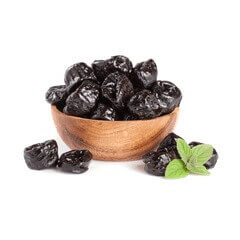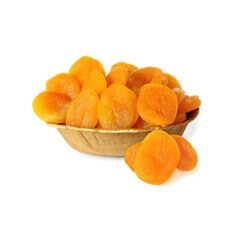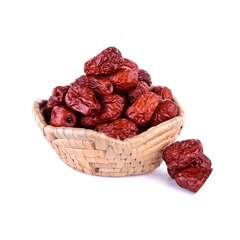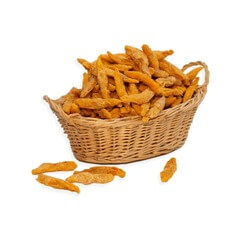Back to basics with a usually liked preparation that highlights rice so much, i.e., basmati rice pilaf.
This allows, on the one hand, to keep the softness while flavouring it and, on the other hand, to use less water and better preserve it. If you like rice, you will see that you just need to add something to it to taste it on its own and enjoy it. Here we give you the easy and basic recipe as well as three tips to keep in mind to succeed every time and everywhere!
Origin
Originally from the Middle East, rice pilaf (from the ancient Greek pilafi) has been around for centuries (even a thousand years!). It has also spread to Asia (where we speak, for example, in India of pulao but more as a dish) and Central America with variations also on cooking (in the oven, for example, sometimes cooked first with water and steam). Here we give you the fastest, most practical, and most used method.
We find that this method gives a particularly airy rice that keeps well (it dries much less quickly than rice cooked in water, for example). It is important to use the right rice (the best remaining, in my eyes, the basmati), which is long and contains little starch. Not risotto rice, for example).
Serve it garnished with seafood, chicken, vegetables, and dried fruit or rather plain with a stew of meat, fish, or even vegetarian.
Easy Rice Pilaf
Easy rice pilaf (for four people)
Preparation: 10 min (+ bath and rice rest)
Cooking: 15 mins
- 300 g basmati rice (or other long rice with little starch)
- 45 cl of water (or quality broth)
- One small onion or shallot (traditional month, but it works)
- 1 tsp powdered spices (curry, turmeric, coriander, cumin, etc.) or a cinnamon stick and two cloves (optional)
- vegetable oil (olive or other), ghee, or even butter
- a pinch of salt
- Soak the basmati ricein a large bowl of water at room temperature and keep it in this bath for one to two hours. Then rinse the rice 3 to 4 times until the water is clear and transparent.
- In a thick-bottomed saucepan, brown the chopped onion with 2 tbsp of oil, ghee, or 20 g of butter. As soon as the onion begins to colour, add the spices, lower the heat, and leave to flavour for 2 minutes.
- Add the drained rice, cover it with water and salt, and cover it with a lid. Leave to cook over medium heat for 12 minutes without opening to retain the steam. Turn off, remove the lid, and fluff the rice with a fork very gently so as to separate it and air it. It should look like cooked, fluffy, “dried” rice.
- Cover again and let stand for 5-10 minutes. Serve as an accompaniment.
Tips:
Storage: rice pilaf can be kept for a few hours at room temperature, covered with cling film, or for up to two days in the fridge. Remember to heat it slightly (bain-marie, microwave) before serving
Cooking time and rest: they may vary slightly depending on the rice, the heat, and the pan. In general, the rice is in contact with water and steam (cooking + resting) for about twenty minutes in all, no more.
Type of rice: the best results are obtained with basmati rice, which is long, fragrant, and with little starch. That being said, in the Mediterranean basin, we also use other varieties, often long rice but sometimes also short
Base: it is generally made up of fat (butter, oil, or ghee, depending on the location) and often onion and/or spices. It is important to bring them back to enhance the flavours. These are not mandatory but give flavour in a subtle way to the point that the rice is already delicious as well.
You can serve it as an accompaniment to stews: vegetables, meat, rice, or as a dish by adding meat (sautéed chicken, shrimp, etc.)
Three Tips for Successful Basmati Rice Pilaf
Soak and Rinse!
This step is not mandatory, but we strongly recommend it; everything will be fine afterward. The fact of soaking allows, on the one hand, to rehydrate the rice, which will therefore increase a little in volume (and cook better and faster) and especially bring out the starch.
It is also, and above all, important to rinse it several times before cooking it, always to remove the starch (completely the opposite of risotto and thus allow you to have separate and very pleasant grains to taste afterward.
Rice and Water Proportions
In principle, it’s simple: 1-1.5, i.e., it takes one and a half times the weight of the rice. For example, for 100 g of basmati rice, you need 15 cl of water.
That being said, there may be small variations depending on the rice, the pan, and whether it has been soaked or not. Yesterday and still today, for those who are used to it, do a little by eye and pour the water to a little more than the volume of the rice.
Covered
Pilaf rice is steamed rice, that is to say, with the steam that forms, which gives it this soft and firm texture. This is why it is important not to touch the lid (the steam would escape, and there would not be enough humidity) and not to mix so as not to break the grains of rice during cooking.
Variants
It’s a great base. Then it’s up to you to cook with onion (even whole, nailed with cloves and removed), shallot, garlic, spices, citrus fruits, and add herbs. And tone it according to what you’re serving with it.
You can also cook everything in the oven, well covered (in a casserole, for example). Times will be at least doubled.
Visit the ADNOOR website for the best long-grain rice, golden Sella basmati rice, brown rice, white rice, Super Kernel Basmati Rice, nuts, seeds, and dried fruits. We take pride in saying that we are the Best Basmati rice suppliers in Montreal and have been the importers, exporters, wholesalers, distributors, and co-packers of various nuts and grains in Canada for the last 25 years. We aim to provide our customers with quality products, so they keep trusting us. So without wasting time, visit our website and order what you need.




